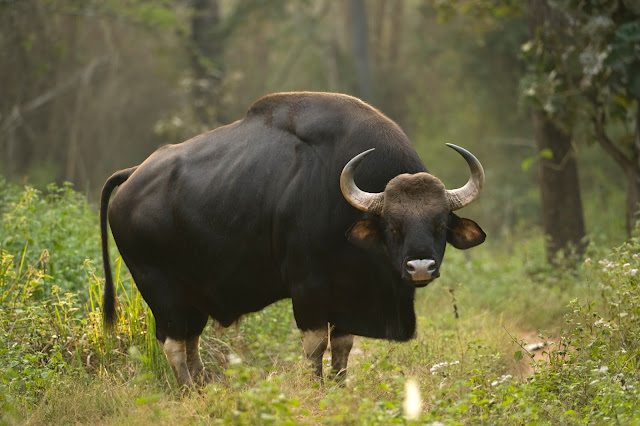Ghudkhur - Indian Wild Ass
Now take a safari of Kutch and see one more interesting animal of Gujarat state, India
It is Ghudkhar- Indian Wild Ass
Introduction Part
- The Indian Wild Ass also called the ghudkhar in the local Gujarati language, is a subspecies of the onager native to Southern Asia.
- As of 2016, It is listed as Near Threatened By ICUN.
Physical Characteristics
- The Indian Wild ass, as with other Asian Wild ass subspecies, is quite different from the African Wild Ass species.
- The coat is usually sandy, but varies from reddish grey, fawn, to pale chestnut.
- The animal possesses an erect, dark mane which runs from the back of the head and along the neck.
- The mane is then followed by a dark brown strip running along the back, to the roof of the tail.
- They are significantly larger than donkeys, are 200-290 kg in size and 2.1-2.5 m in head to body length.
- Males are larger than females.
Biology and Behaviour
- Indian wild asses graze between dawn and dusk.
- The animal feeds on grass, leaves and fruits of plant, crop and saline vegetation.
- It is one of the fastest of Indian animals, with speeds clocked at about 70-80 km per hour and can easily outrun a jeep.
- Stallions live either solitarily, or in a small groups of two or three while family herds remain large.
- Mating season is mainly in rainy season . When a mare comes into heat, she separates from the herd with a stallion who battles against rivals for her possession.
- After few days, the pair returns to the herd.
- The mare gives birth to a one foul.
- The male foul weans away by 1-2 years of age, while the female continues to stay with the family herd.
Range of Indian Wild Ass
- The Indian Wild Ass's range once extended from western India, Southern Pakistan, Afghanistan and South- eastern Iran .
- Today , its last refuge lies in the Indian Wild Ass Sanctuary, Little Rann of Kutch and its surrounding areas of Great Rann of Kutch in Gujarat province of India.
- The animal however, is also seen in the districts of Surendranagar, Banaskantha, Mehsana and other Kutch districts.
Conservation
- First Census of the wild ass was done in 1940, when there were estimated 3,500 wild asses.
- But, by the year 1960, this figure fell to just 362, it was then classified as a highly endangered species. In year 1973 & 1976, Rann of Kutch and adjoining districts were taken up as the area of conservation for this sub-species also known as Khur.
- From1976, the forest department began conducting the wild ass census.
- Water holes were increased in this area , the forest department has also started a project for having fodder plots through the forest department is yet to get desired success.
- In 1998, the wild ass population was estimated at 2940 , by the year 2004 it has increased to an estimated 3863.
- A recent census conducted by the forest department in 2009 has revealed a population wild ass in the state was estimated to about 4038.
- Recently, in 2015 the current census of the Indian Wild ass population has increased to more than 4800 individuals in and outside the Wild Ass Wildlife Sanctuary of India.






Comments
Post a Comment